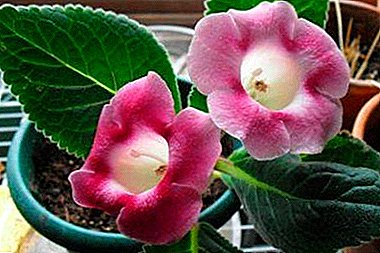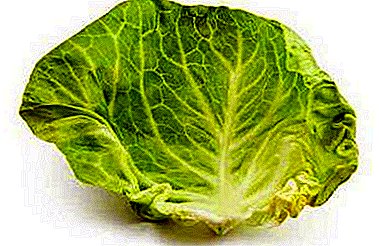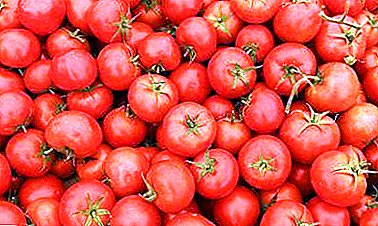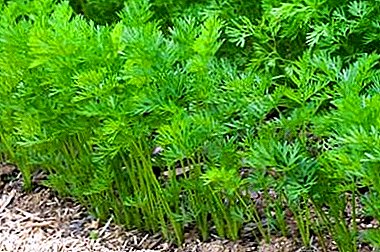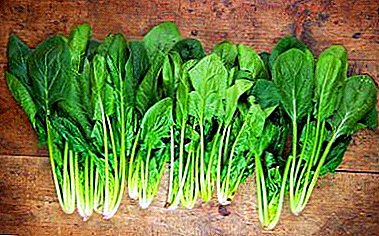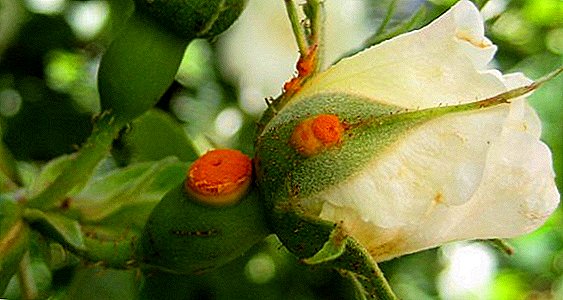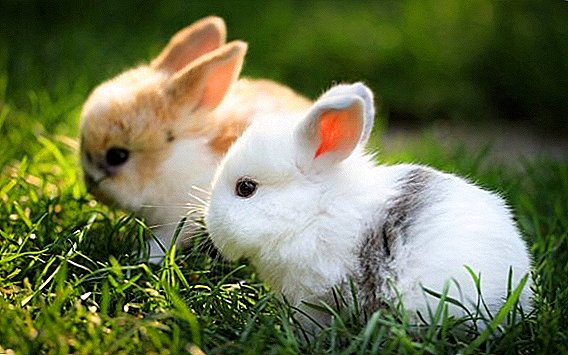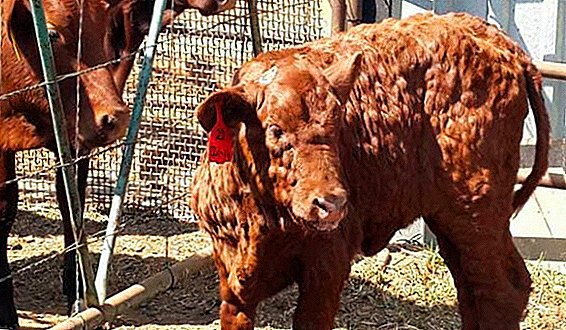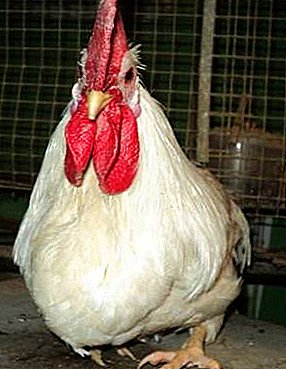
Chickens Dwarf Leghorn (also called this breed mini-chickens white and B-33) enjoy the deserved attention of poultry farmers due to its high egg production.
Dwarf Leghorn are an egg breed that is a carrier of the recessive dwarfism gene (in other words, B-33 is a smaller copy of the leggorn).
The name of the breed is not accidentally used the word "dwarf", these chickens are quite miniature: The live weight of an adult rooster is 1.4-1.7 kg. Live weight of chicken - 1.2-1.4 kg.
And the word Leggorn, which is not very familiar to the Russian ear, is the name of the port of Livorno, pronounced in English.
It was there that, at the end of the 19th century, this breed was bred, by the way, at that time it was not yet distinguished by such high egg production.
In the All-Russian Research and Technological Institute of Poultry were bred for the purpose of their further breeding in private farmsteads.
Leghorn Breed Description
 Color - white. Daily chickens of this breed are bright yellow. Chickens with a good gene pool are distinguished by a high (at the level of 95%) survival rate.
Color - white. Daily chickens of this breed are bright yellow. Chickens with a good gene pool are distinguished by a high (at the level of 95%) survival rate.
Breed signs:
- The head is of medium size, rounded, red.
- Comb - leaf-shaped. In cocks, it is erect, in hens it hangs to the side.
- The earlobes are white (or with a bluish tint). Red specks are considered a defect, it is recommended to discard such birds.
- Bill is yellow, strong.
- The color of the eyes of young individuals is dark orange, in adults it is pale yellow.
- The neck is elongated, with a bend.
- Tail: in cocks, it is raised, in hens - on the contrary, it is lowered. The tail at the base is wide.
- The body is wedge-shaped, the belly is voluminous.
- The plumage is dense.
- The legs are of medium length (the older the chicken, the more blue they get), non-feathered, thin-boned. Tarsus length the shorter the better.
- The wings fit snugly to the body.
Content and cultivation
 Breeders, in whose poultry yard these birds settled, note the economy of their breeding.
Breeders, in whose poultry yard these birds settled, note the economy of their breeding.
Feed these chickens consume 35-40 percent less than their small-sized counterparts (for example, the same Zagorian salmon). Do not require a large area for walking, even though the Dwarf Leghorny are very mobile.
You can grow and maintain them in cages and outdoor cages. These chickens quietly tolerate freezing temperatures and are well acclimated. Breeders note Leggorn's friendliness - they rarely fight among themselves (as a rule, roosters can fight to find out their leadership positions) and do not conflict with other inhabitants of the poultry yard.
Aggression chickens Dwarf Leggornov can manifest in case of lack of food and crowding in the aviary or cage (but this is a feature of the behavior of chickens, regardless of their breed).
The males of the Dwarf Leghorn are quite active, thanks to which the fertilization of eggs is 95-98%. As breeders involved in the Dwarf Leggorn say, the instinct of hatching in chickens of this miniature breed is lost.
The way out in this situation is an incubator. An important caveat: during incubation, eggs may require a longer cooling time (this is due to their large size).
Features of feeding birds
 There are no special recommendations for feeding chickens of the Dwarf Leggorn breed, but special attention should be paid feed quality and balance.
There are no special recommendations for feeding chickens of the Dwarf Leggorn breed, but special attention should be paid feed quality and balance.
Sometimes their breeders encounter such a situation: on the 8-10 day of life, the chicks may have their fingers curled sharply, then they de-reproduce completely. This is due to the fact that due to the recessive dwarfism gene, they have other metabolic processes, so feeding must be balanced and more complete.
Unbalanced feeds (for example, a surplus of protein or its deficiency) affect the health of chickens of dwarf breeds more than in meat and egg poultry or in adapted hybrids. The reason for twisting fingers in chickens is an overabundance of protein in feed. Balanced nutrition will help avoid losses in broods.
Adult chicks are transferred to the diet of adult chickens at the age of 21 weeks. Young animals can be fed with ready-made feed for poultry, as it is optimally balanced and contains all the necessary trace elements. Layers are advised to add vitamins and easily digestible protein to their diet.
It is useful for chickens to add sprouted grains to the diet. Dwarf Leggornes respond quickly to improperly balanced feed: egg production can fall within three days. With proper feeding, the hens also quickly recover and continue to carry large eggs.
Specifications
 Today Leghorny - one of the most popular breeds in the world.
Today Leghorny - one of the most popular breeds in the world.
It doesn’t matter whether they are bred in a private yard or at a poultry farm, layers make an impressive egg production result - 210-260 eggs per year.
Egg characteristics:
- The color of eggs is white.
- Egg weight - 57-62 grams.
- Scampering begins with four months. The first 2 months can carry not very large eggs, then the indicators improve.
Analogs
Very similar to the Dwarf Leggorn Russian white chickens (they appeared as a result of selection work with Leggorn). Russian white chickens and dwarfs leggorny are similar in appearance (the first are larger, on average 2.5 kg roosters weigh and 1.6-2.0 kg are chickens), have similar characteristics: early maturity, shell color.
The advantage of Russian white: in comparison with the Dwarf Leggorn, it has a well-developed incubation instinct.
Breed New hampshire inferior to Dwarf Leggorn in egg production: the level of New Hampshire is 200 eggs per year.
Breed of Dwarf Leghorn (as well as the Leghorn themselves) will not lose popularity with the poultry farmers due to its functional characteristics (high egg production; good meat characteristics; economical maintenance).
 Small English fighting chickens are unique in their own way. They combine beauty and fighting spirit.
Small English fighting chickens are unique in their own way. They combine beauty and fighting spirit.
If you want to know what should be the sewage system in a private house, then you should go here: //selo.guru/stroitelstvo/sovetu/shemu-kanalizacii.html.
In Russia, the All-Russian Research and Technological Institute of Poultry Breeding has a breeding and breeding and gene pool herd (including chickens of the Dwarf Leghorn breed).
The history of the institute began in 1930, over the years a unique experience has been gained. Address VNITIP: 141311, Moscow region, proud Sergiev Posad, st. Pticegrad, 10. Phone - +7 (496) 551-21-38. E-mail: [email protected] Website address: www.vnitip.ru.


